
Video: Managing Freelance Burnout
Co-hosts of The Freelance Writing Coach Podcast, Emma Siemasko, and Kaleigh Moore, invited Harlow co-founders, Andrea Wildt and Samantha Anderl, to discuss the very common issue of burnout amongst people pursuing a freelance career path.
You can tune into the recording here:
Check out previous episodes of the Freelance Writing Coach here. In each 20-minute episode, Emma and Kaleigh take a deep-dive into a specific hot topic for freelancers and provide actionable advice and firsthand insight from their 10+ years of freelancing.
You can also follow the hosts on Twitter here:
Transcript
Kaleigh
So, we have the lovely folks from Harlow here with us today. We are going to be talking about the topic of burnout which — if you’re a freelancer or you’re thinking about freelancing — is probably top of mind. Maybe you’re burnt out at a full-time job or maybe you’ve been freelancing for a while and you’re feeling really, really exhausted and like, if nothing else, you want to hear other people talk about it and vent about it and know that you’re in the same boat. So, if that’s you, you’re in the right place. I’m going to kick it over to Emma here. She’s going to introduce our speakers and we will get right into the conversation. Also, a quick note — if you have questions, please use the chat.
Emma
Hi everybody, I’m Emma. Thanks so much for joining. So, we have Samantha Anderl and Andrea Wildt. They are the co-founders of Harlow, which is a tool for freelance writers that helps them manage their day-to-day and ultimately get paid. We are here today to discuss burnout, and I’d love to punt it over to them and hear a little bit about their experiences with burnout. Why don’t we start with Andrea? So when we were discussing this, Andrea was like, “I don’t know if i’m qualified to talk about this, I really struggle with this,” but I’d love to hear a little bit more about your struggles with burnout.
Andrea
Yeah, so when I think about how to manage burnout, for me, it’s all about how I create balance in my life and boundaries, because I tend to be a little bit of a people-pleaser. I want to say yes to everything and I’m also a procrastinator, and those two things just don’t work very well together. I end up taking on more than I should, pushing it all off until the last minute, and then being totally overwhelmed and just not able to manage my time very well. So, I’ve had to institute a lot more boundaries and structure in my life — in my personal life and my work life — and I do it in kind of an old school way, to be honest with you. I do a lot of calendar-blocking and list-making. So, for me, managing burnout really comes down to task management and client management. And then leaning on Samantha, because she tells me to say no to things. Samantha’s way better at this than I am.
Emma
Are there certain tools you use for project management and task management? I think everybody has sort of different workflows, but I’d love to hear a little bit about yours.
Andrea
Yeah, now we’re using Harlow for that because obviously Harlow helps with project management and all that. But previously we were using Asana for task management, which was great between the two of us and any other contractors that we were working with. I’m old-school so I also write everything down in my notebook. I use the notes app on my computer. And I literally will just block hours out on my calendar — like, for these two hours I’m going to get this task done. So it’s really not sophisticated.
Emma
How about you Samantha? So is this something that you struggle with? Andrea said that this is something that you help her with so I’d love to hear a little bit about your perspective on where burnout comes into your life, if you’ve experienced it, and how you go about preventing it.
Samantha
Yeah, absolutely. So, before Andrea and I were freelancers together and before we founded Harlow together, we actually worked at this company called Campaign Monitor. She was the CMO and I was the head of marketing, and that’s, I think, where we first got burnt out in our careers. We were working with teams in Australia and San Francisco and the UK and the Philippines — teams from all over the place — and so, toward the end of our time there, Andrea and I started to really struggle with boundaries in our work life. We were having meetings from 7 AM to 7 PM. It was just wild. We learned a lot there, but one of the reasons why we both left was to own our schedules and have better autonomy — and to actually get that freedom and flexibility.
She and I chatted back and forth and were like, okay, we’re going to found this consulting business — which is just a fancy way of saying we would be freelancing. And at first, we were really good at saying, “Okay, we’re only going to take on a couple of clients. Here’s how we’re going to work. Here’s what it’s going to look like.” But then we realized we could make a lot of money if we took on more clients and more clients and more clients. And so, we initially had this nice transition into freelancing where we had a lot of spare time, we had flexibility, we had freedom, and then all of a sudden we ramped up to where we had none of that.
So that, I think, is the first point where I got really burnt out when I was freelancing. And Andrea and I had a lot of hard conversations, like, How many clients could we realistically have? What do we want our schedules to look like? How much do we need to charge so that we can better manage our schedules and just be better about that? So I think both of those experiences — at Campaign Monitor and when we got really overwhelmed at Interimly — is what led me to creating a lot of personal boundaries and work boundaries.
Andrea
One of the things that I think we found is that it wasn’t only the volume of clients that caused burnout but it was sometimes the type of client. You know, you can have that client that doesn’t respect boundaries that wants you to jump on a call at 5pm. So there was a lot of deep soul-searching around what clients are actually good for us and that was part of the process of managing overall burnout in our business
Emma
I’d say I’ve had the same experience with clients and one of the things that’s helped me too is setting expectations with the clients at the beginning. It’s hard once you already have a client who expects you to turn something around within a matter of hours or immediately jump on a call but it’s a little bit easier when you set expectations in the beginning. Like I send out an email to every new client that’s like — “You can expect me to respond to your emails within 48 hours. If you need to schedule a call, use my Calendly link. I’m not available to jump on a call ever.” And it just sort of lays out those expectations, which I really think prevents that.
But one of the things that’s interesting about burnout that I see is that it’s one of the top reasons that my coaching clients come to me — because they’re burned out. When I started offering coaching, I was like, “People are going to come to me because they want to make more money as a freelancer — they want better systems.” And there’s some of that, but a lot of it is like, “I am seeing a lot of success but I’m so burnt out. I didn’t start my business with the systems in place that I was going to need because I didn’t know what they were going to be.” I think that’s part of it — you don’t know what kind of clients or how many clients you can take on. You have to sort of learn as you go.
So what I wind up helping people with is defining what is actually bringing you joy and giving you energy and what’s really sucking that energy. And oftentimes what I’m recommending to people is firing clients and maybe ultimately making less money. I think burnout is something that everybody at every level of business struggles with and we sort of constantly have to work to prevent it before it gets really bad. And also, when we’re recognizing the signs of it, figure out ways to take time off — if we have the flexibility, maybe to push our deadlines out for one week and just restore ourselves.
Kaleigh, we haven’t heard from you about burnout. I’d love to hear what what you think and your experience
Kaleigh
Yeah, so I have a pretty full plate and I have for like the past two years, with no break. For me, the pandemic was very much like — I’m not going anywhere, so I’m gonna stay home and just be heads down and work. And that is a recipe for disaster, but the good thing that’s come out of it is that it’s given me time to think about what you said — systems, processes, tools — and also getting a little bit more comfortable slowly with delegation, so finding people who can help me with different pieces of the puzzle so that I’m working as efficiently as possible and doing what I need to.
It’s an ongoing thing for me. I feel like I’m still struggling with burnout, maybe just managing or functioning with burnout. Emma, I feel like you’re a good sounding board for me though. Anytime I get super burnt out I can turn to you and be like, “What do I do?” and you kind of help me take a step back and look at things and be like, “What’s truly important here? What are you enjoying?” Like you said, the questions you ask your coaching clients, which is really helpful.
Emma
I do think finding sounding boards in general can help manage it, and being open about what you’re experiencing. Maybe we should have started out this chat with this, but we didn’t really define burnout and what it means. I think, to me, burnout is basically being so exhausted by work that you’re having trouble functioning. Like, you’re maybe having trouble delivering the quality that you want to, you’re having trouble doing meaningful work on the business. I know when I’m burnt out, the result is that I feel completely uninspired. I just feel like I don’t want to do this anymore, what’s the point of all this? So for me, that’s kind of what it means. For some other people, maybe they have trouble sleeping when they’re burnt out. What do those symptoms look like for you, Kaleigh and Samantha and Andrea?
Kaleigh
Yeah, I’ll hop in here first. I think for me, it’s definitely the sleeping thing, like you said, but the other thing is that I cannot shut off my work brain, so whenever i’m not sitting at my desk I’m still thinking about work all the time. So that has become a very big red flag for me, when that starts happening. And I’m just constantly stressing and like adding to a to-do list that never seems to end. That’s too much — you need to be able to have a hard line and separate from this. What about you guys?
Andrea
Yeah, I would say that’s it definitely when I can’t be present; when I sit down to dinner with my family or my friends and my brain is still reeling. I also dream about work, which is the worst, especially when you’re dreaming about, like, spreadsheets. It’s the worst. I grind my teeth. I start to get anxious. It manifests itself in all these different ways. I think it depends on the type of anxiety also — like sometimes I get burnt out because I took something on that I wasn’t quite sure about and it became too much, and then I start to have all of that self-doubt, which manifests in a slightly different way.
Samantha
All of these exact same things, and I will say the additional thing for me is I start to feel it physically as well, because when I start to burn out, when I start to have a lack of boundaries, I’m not doing the things that make me feel physically good, whether it’s working out or yoga or taking time to breathe or to stretch — these things that really energize me. All of a sudden I’m not doing those things anymore, so I feel sluggish. My brain feels sluggish, my body — it’s just head to toe.
Emma
Awesome, yeah, I agree. That reminds me of thinking about ways to combat this because we talked a little bit about how to combat it at work by using the right tools and blocking your calendar and all of these things. But I think there’s also things that we can sort of do in our personal lives that make managing this better.
I remember last month I was feeling incredibly burnt out and I was venting to my therapist — “I’m so burnt out at work, this is not inspiring to me” — and she and I went through a litany of complaints, and she was like, “Hey, have you been sleeping and have you been exercising?” It was a very simple question, but I realized, I have a toddler at home, he had really not been sleeping well for the past month, and anyone who’s a parent knows that sometimes these issues start as a small thing and then it gets bigger and you don’t deal with it until it becomes a giant thing. And I was like, okay, maybe I need to call in a sleep consultant to help, which I did (and I highly recommend it to any parents struggling with sleep).
I realized that I had stopped exercising because Omicron had gotten bad at the beginning of the year and I just took a break from the gym and hadn’t gotten back to it. And when she said that, I was like, okay, I need to prioritize sleep and I need to prioritize exercise for mental health, beyond the calendar blocking and the clients and all of those things. And it dramatically helps.
I’m someone who’s like, “I don’t really need to exercise. Eating better isn’t gonna help me.” I have that attitude a little bit, but once I made the changes to go to bed earlier, actually get a good night’s sleep, make the time… and, speaking of calendar blocking, I think this is actually my workout block. You guys weaseled your way in because this is a special event, but usually from 11:30 to 1:00 is my workout block every day. I don’t always work out then, but I always have it as a time when no one can schedule a meeting so that I’m free to go to the gym from 12 to 1 when I want to.
So it’s not just about what you’re doing to prevent work burnout while you’re working, but what you do when you’re not working to take good care of yourself and live a more harmonious life.
Kaleigh
Yeah, I think it’s interesting what you said about having the expectation set upfront with clients. I feel like that’s a really good, proactive way to get in front of this and to get ahead of those things that can really quickly lead to being burnt out. So like, these are my office hours and if you send me an email I will reply within X amount hours on business days — just being really clear about those boundaries upfront and having it documented too, so that if it comes up down the road and becomes an issue, you can refer back to that and say, “Yep, happy to help you, but it’s going to be X — you know, per our earlier conversation.” So I think that that helps a lot too.
Andrea
Yeah, I honestly wish I would have listened to your podcast about managing meetings like two years ago. I feel like that would have really helped me, because, like you said, it’s just all about setting those expectations. I get super anxious, especially if something’s wrong and somebody slacks me, “Oh, this is broken,” or, “I need this ASAP,” then I feel like I immediately have to drop everything else and go handle that, which then means I’m behind. And that increases the chances that I’m going to burn out.
Samantha
Totally, and I’ll add to that too — spend time scoping out your work and be realistic with your deadlines. This is something that Andrea and I got a lot better at as we progressed with our freelance career. At the beginning we spent a really long time thinking through how long tasks would actually take us, how much we could charge for that thing, what the deadline should be, and we were really pushing ourselves. Like Andrea’s mentioned multiple times, deadlines coming up, having to take meetings, having to do these things last minute because we weren’t giving ourselves enough time to really be proactive instead of reactive.
So if you can spend the time upfront to really scope out your work and then give yourself so much cushion on how long things actually take you — because we have to account for distractions at home and we have to account for things coming up with other clients and we have to account for research that we didn’t think we were gonna have to do. Or more emails and iterations, back and forths, etc. You have to account for all that stuff upfront so you’re not pushing yourself to meet all these super unrealistic deadlines. And I know sometimes clients will give deadlines and we do have to meet them, but when we can take that power and take that control back, I think that is super valuable to prevent burnout.
Emma
I also think that since we’re talking to a group of freelance writers we shouldn’t discount how much writing can actually burn you out, because this is a high brain kind of activity. I think client communications can also burn you out but I remember when I first started, the volume of writing I was doing was insane. My first job that I had in-house before I was a freelancer, I think the job was to write something like 4,000 words a day every day — which, for those of you who are writers, like, oh my gosh, how is that even legal? It was just wacky. But I think that when you’re dedicating that much time to writing it’s a real straight path to burnout.
So I think that is why Kaleigh and I really advocate for project-based rates as opposed to hourly rates. What someone is paying for is the value that you ultimately deliver as opposed to the hours that you’re giving them because if you’re an efficient writer, you ultimately want to be paid for the project and feel that the time you’re spending on it is valuable to you. And also, there’s an energy cost that’s baked in there. I know for myself, for all the writing that I’ve done and from many of the people that I talked to, it’s sort of like a unique setup to get burned out on it.
I think anything where you’re doing a lot of repetitive [work] is a path to burnout. And that’s also advocating for finding ways to grow in your business that are maybe not writing-related — offering coaching or offering digital products or finding events like this to attend to try and break up the monotony of “I just have to deliver on deadlines,” because I think we can get heads down and that’s the only thing we’re doing and that is not a very fulfilling way to have a freelance business.
Kaleigh
We had a great question here from Marie as well. Marie said, “Can you talk more about your process to determine how long projects should take and how you figure out deadlines with clients?” which is a good question, especially if you’re new to this and you’re really not sure how long something could take. I would love to hear what you guys do. I know in my case, I think padding deadlines is a big help, but at this point in my career, after doing this for eight years, I kind of know how long things take, so it’s a little bit more automatic. But I’m curious to hear what you guys have to say.
Samantha
Yeah, honestly, one of the things that Andrea and I did upfront… because we had been in a corporate environment for so long, it wasn’t really about how long things took us — it was more about prioritization and what was most important for the business. But when we moved over to freelancing, we literally started tracking our time, and not so that we could bill clients. We started tracking our time to understand how long things actually took us and over how many days and how many times we came back to things and just what our work process really was. And that was wildly beneficial for me.
I know a lot of us are like, “Time tracking, eh, no thank you.” This was purely for personal reasons, for me to truly understand how long something took me and once I was able to do that I could go back and reflect and say, “Okay, I did this thing three times. Each time, it takes me a [slightly] different amount of time to do it, but what is my average or even what is the most time that it took me? And then how do I pad that? And [Andrea and I] put together a little grid where we said, “Okay, here are the different services that we offer. Here’s how much time that takes us. Here’s how much time we should actually allocate to that to give ourselves some padding. And then here’s how much we should charge for it.” So we started getting really structured in that way.
Andrea
And I will say, in addition to tracking our time on client work, we actually tracked our time on the business stuff too. So how much time are we spending prospecting and working on our website, or participating in community, or researching things that are not necessarily directly billable or part of a project? But that helped us to understand what our true capacity was, because if we just looked at how much time we spent on client work, then all of a sudden we wouldn’t have time to run our business and send our invoices and prospects and things like that.
Emma
Yeah, I would just add sort of like a hack to everything that has been said, which was great and is way more sophisticated than what I’m about to say. I would just say that when you’re putting a deadline out there. if you’re like, “I think I can do this in a week,” maybe double that, because you’re never going to be sad that you had more time.
We have some other questions coming in here so I’m going to get to them. So Morgan had asked about… I think this is specifically about Harlow and it’s maybe a good opportunity to talk about your tools. So she asked, “Is this a replacement or a supplement to something like Honeybook? How is it different or a better fit for a freelance writer?” So maybe this is a good opportunity for you to talk a little bit about Harlow and what the benefits of it are, and maybe how people can learn more.
Samantha
Yeah, of course. So I’ll kind of go back to the reason why Andrea and I built Harlow. It all ties back into this.
When we were first freelancing and we were trying out all of these different tools for our business, Andrea and I provided demand gen services to software companies. So we were very much selling into an organization and we had a lot of pals in freelancing — writers, designers, developers, other marketers, PR consultants, HR consultants — all these people that we surround ourselves with and talk to on a regular basis. And we started asking them about the tools that they use to manage their business and what we really found was that there was not a fan favorite tool. No one was using the same thing. People were piecing things together or they were using other tools that they didn’t like or that didn’t bring them joy.
And Andrea and I have this deep belief that the tools that you use don’t have to frustrate you or be this typical software approach. We really wanted to build a tool that brought in empathy and joy and this concept of delight into software. So we were like, hey, there’s not a fan favorite tool — nobody loves anything that they’re using. And there’s not a lot of companies that were focusing specifically on this B2B freelancer — the freelance writer or designer or HR consultant that was selling into an organization. So we saw this as an opportunity. We were like, we’re gonna build that.
And so we’re building Harlow in a way that it will help you manage everything from proposals and contracts and getting those signed all the way down to invoicing and sending out your invoices and reminders, and then everything in between, so client management, getting an interface with everything right in the same place, task management, all of those things. And Andrea, I’ll let you chime in there.
Andrea
Wow, that was great. That’s a good pitch, Sam.
Sam
Thank you, we’ve been practicing.
Emma
How can our listeners learn more about Harlow? Like where do they go? How do they get involved?
Andrea
Yeah go to our website — it’s meetharlow.com — and you can follow us on all the social channels. Sam’s super active on social media also. You can find her on Twitter. You can find me there but I don’t say a whole lot.
Sam
We’re getting her going though. She is tweeting one hundred percent more than she used to, which was not at all, so we’re on the way.
Andrea
I’m working on it.
Emma
Awesome. So, Zoe had asked… she said, “Could we talk a little bit more about calculating project-based and value pricing? I’m currently charging per word.” Zoe, there’s a podcast episode that we have about rates that’s specifically about calculating this that you should listen to if you haven’t already. We can find a link and drop it in the chat.
I don’t think there’s anything wrong with charging per word. I think, well, there are some things wrong with it, but I don’t think it’s as bad as using time-based pricing. But I think what it gets at is, if you charge per word, you’re sort of saying, “Well, the only value I provide is literally the words on the page,” and I think when you move to project-based pricing, you’re like, “Look, you’re not just getting the words — you’re getting my research, you’re getting strategic meetings with me, you’re getting interviews with subject matter experts, you’re getting revisions, you’re getting an outline.” Whatever the whole package is, you sort of make it look a little bit more like a package, and that’s maybe more valuable to the client.
So that’s kind of how I think about it in terms of actually pricing it out. There’s a formula that I use and recommend, which is basically, think about how much time something takes you internally. So let’s say it takes you three hours to write a blog article. And then think about what you want to make in a year — like what your annual salary was at your last job, or where you would like to be, and then figure out what the hourly rate is. You can just find a salary calculator to figure out what that hourly rate was, and then double it.
So the example would be, let’s say, back to the three blog articles. Let’s say it takes you three hours and you’re charging your salary. You want it to be $100 per hour, so that would be $300 for the blog article and then double it to $600. And I realized that was a little convoluted, how I said that right there wasn’t my clearest oratory skills ever, but it is outlined better in the podcast. And it’s basically about finding a way to sort of quantify how much time you’re spending and then, by the way, one blog post down the line might only take you an hour and a half, but you’ve sort of standardized your pricing, so regardless of how much time it ends up taking you, or if you get faster or more efficient or whatever, you still have a standard rate. So that’s what I’d say about that. And if, Kaleigh, you want to jump in.
Kaleigh
Yeah, so I do the per word pricing model too, and what I do with that is, for me, it’s just the easiest way to scope blog content without, you know, doing more work and then, “Oh, I agreed to this lower tier project-based rate.” It’s just an easier way to keep track of the scope of things, but with that is a conversation right off the bat that says, “Here’s what all is included in my rates, so it’s very clear that you’re not just paying for the words. It’s what Emma said — you’re getting the introductory call with me, I’ll give you a writing brief, you get a round of edits included, my professional editor that I have on board now will review this before it even gets to your hands.” So it’s important to have that value conversation and talk about all those extras that are part of the rate as well.
And this kind of leads nicely to the next question we had which was is subcontracting a good way to manage burnout? So I know that I have thoughts on this but I’ll kick it to you first to see what you have to say.
Andrea
I think it can be, but it can also contribute to burnout, so I think my answer is it depends.
Emma
That’s what I was gonna say. Subcontractors, once they’re up and running and you really trust someone — they can offer, especially if you’re going through a rough patch like in your personal life or things aren’t as inspiring to you and you really like just need something to lean on — it can definitely alleviate burnout. But training somebody, finding somebody… all of that stuff can make things a lot worse. If you have a big team of subcontractors, the project management of that can just get crazy, especially if you haven’t done it before and you don’t have the processes.
So I think it’s just kind of like writing, honestly, where once you have processes in place it can really help but it’s not like a surefire way to beat burnout.
Kaleigh
Yeah, totally agree. I think the one thing that sounds really lovely about subcontracting on the surface is like, “Oh I’m just delegating, right? I’m just handing this off to somebody else.” But there’s so much documentation that has to be in place up front so that you have kind of systemized this as much as possible, otherwise it’s like having 10 employees all of a sudden, and all these people need something from you, and there’s no documented point of reference, so now you’re busier than you ever were.
So it’s definitely not something to look to, like, “Oh, this is going to solve all my problems.” There’s a lot of upfront work first.
Samantha
Yeah and I’ll add to that — if you are going to subcontract, finding the right people is so important. That’s something that Andrea and I found out along the way. We were really lucky to partner with really great subcontractors, but even bringing on people that we already knew we worked super well with provided challenges. So you really need to vet those people up front make sure that you’re gonna feel super comfortable and confident that they’re working on your client work and that is under your name and the product that you’re delivering. So there’s a lot of upfront work that goes into that.
Andrea
And there’s a lot of hidden work too. You have to figure out how to pay them. They’re going to invoice you. And you’re going to have to deal with taxes at the end of the year. All of that stuff. So there’s all these little things that add up.
Samantha
And I will say, on a positive note, to be totally honest, subcontracting is the thing that allowed Andrea and I to grow our business to the level that it did. We couldn’t have gotten there without subcontractors, so it did help us really grow our business, it helped us make more money, it helped us deliver a more robust product to our clients. But it’s a lot of work to set up.
Emma
Yeah, I would say, see subcontracting as a tool for growth as opposed to a tool to reduce burnout or a cheat code. It is definitely a way to scale your business and make it bigger.
We have one more question to get to and then we’re going to wrap up. I know we’re a minute over. So this doesn’t exactly have to do with burnout, but I think it’s a worthwhile question from Zoe. Do we have advice on moving off a freelance platform? She says that she’s currently on Fiverr and it’s not a bad platform but it has a high fee.
Zoe, this is like a very big topic. I’m also going to recommend another podcast episode we have about how to find and get new clients. But I think that working on finding some clients off of the platform and elevating yourself [is important]. One thing that I’ve seen with my coaching clients that aren’t on platforms is they’re like, “Well, I’m on this platform, so I don’t need to have a presence on LinkedIn. I don’t really need to have a presence on Twitter. I don’t need to have a personal website. I don’t need to be sharing who I am and what I’m working on, because everything’s coming in.”
So my recommendation is to start with those foundations — making sure that your social media presence exists. I worked with a coaching client recently who was like, “Oh, I haven’t touched my LinkedIn in years.” I think she was getting most of her clients from a platform as well. Same with the freelance writing website — not sure where you are with that, but again, sort of positioning yourself in other places. First you have to do that, and then you can work on starting to get clients from that.
I don’t know if you all have anything to add there.
Samantha
Yeah, I’m a big believer in building up a referral network. I know that these platforms can be really wonderful for finding clients, especially when you’re first starting out, but even building up your referral network and having people who trust you send you business, and therefore the client trusts you. That also can prevent burnout, because then you’re coming in with a level of trust upfront. You still need to articulate your value and tell them what you do and, you know, sell your pricing. But it makes it so much easier when people are familiar with you and the product that you offer, and that you’re being recommended by somebody who’s super trustworthy. So I think that if you can build that up and build up your referral network, it’s really invaluable.
Kaleigh
Yeah, I’m gonna hop in and say that another thing that people often don’t think about doing — but can be a really great way to kickstart getting off of a platform like that — is just send out an email to your network of people that you know maybe from past jobs, friends, family, and say, “Hey, I’m doing this new thing now. If you or somebody you know needs that type of service, here’s my website.” Or, you know, send them to this email address and just give them a little bit of context on what it is that you’re offering, who you ideally would like to work with. Make it super easy for them to make those referrals and recommendations. Don’t discount your personal network. That’s kind of how I got started — just putting some feelers out and saying, “I’m wanting to do more of this. If you know somebody who needs this type of work, send them my way.” So don’t discount that.
Samantha
Yes, self-promote! Do not be afraid to hype yourself up. Tell everyone you know exactly what you’re doing. You have no idea where clients are going to come from. We have people who started freelancing at the same time as us, and luckily we made that connection early on, and we sent clients back and forth all the time. It was a multi-year partnership. So promote yourself, put it out there, tell people what you’re doing.
Emma
Yeah, I’ve heard of this concept of connecting yourself with super-connectors — these people who sort of know everybody, and they’re somebody that everyone comes to, like, “Do you know a writer? Do you know a designer? Do you know an accountant?” And they like to have a list of people that they send someone to, and it only takes knowing one or two of these people to start [finding] really good clients. So I think, definitely, making connections is good and coming to an event like this is also a good start. But there are many other communities out there too.
So that brings us to 12:05, so I think we’re going to wrap up. Thank you, everybody, for coming today. It was great to have all of you. Thank you so much to Harlow for sponsoring this season. Everybody should go check out their tool on their website at meetharlow.com.
And the newest season of Freelance Writing Coach is out and coming out weekly, so give us a listen as well. Thanks everybody!




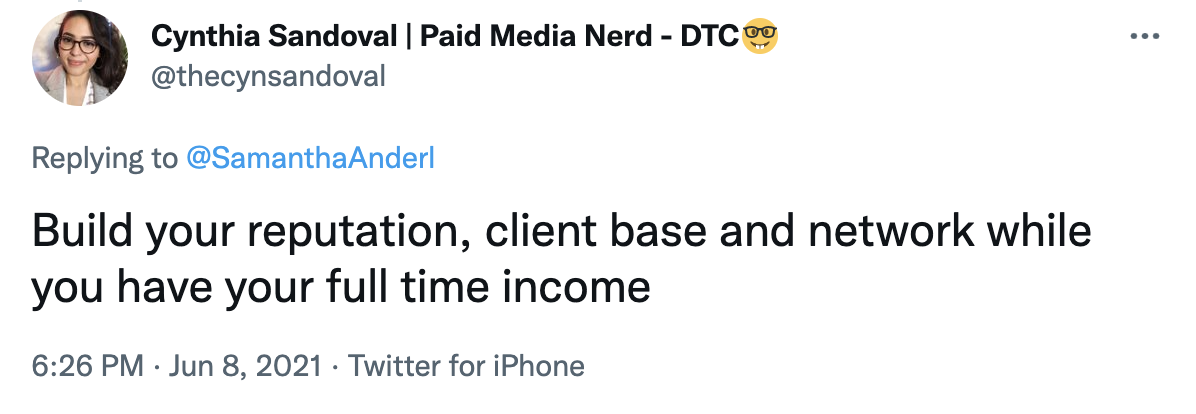

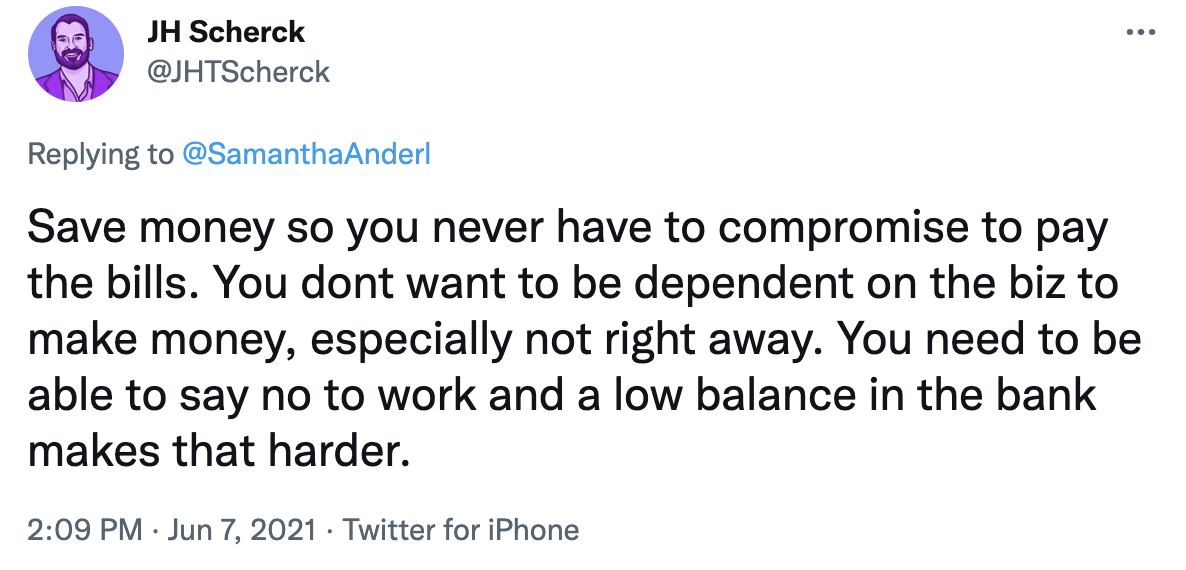


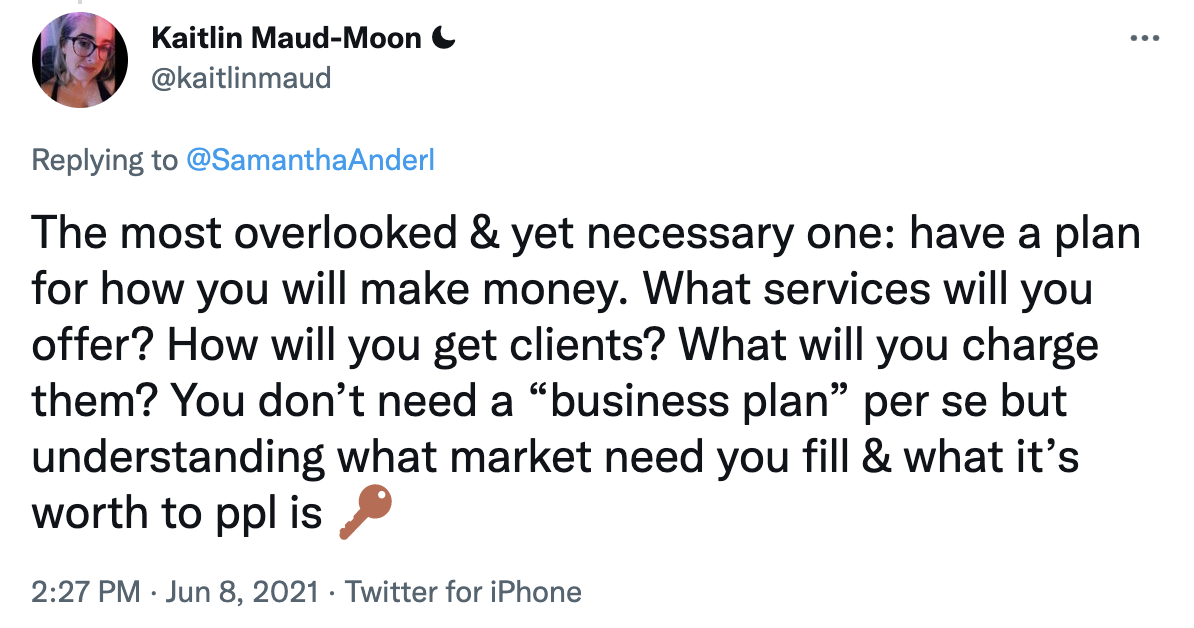






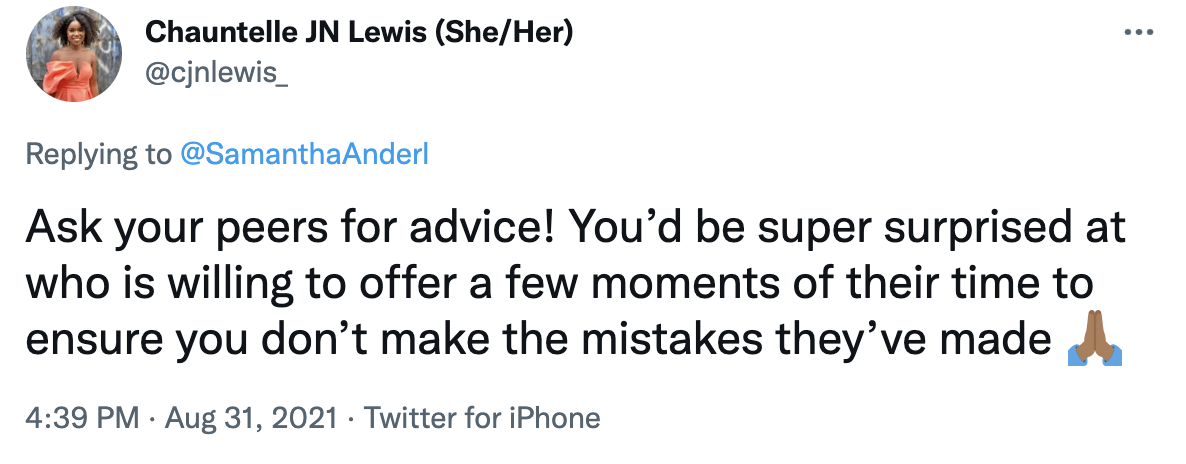

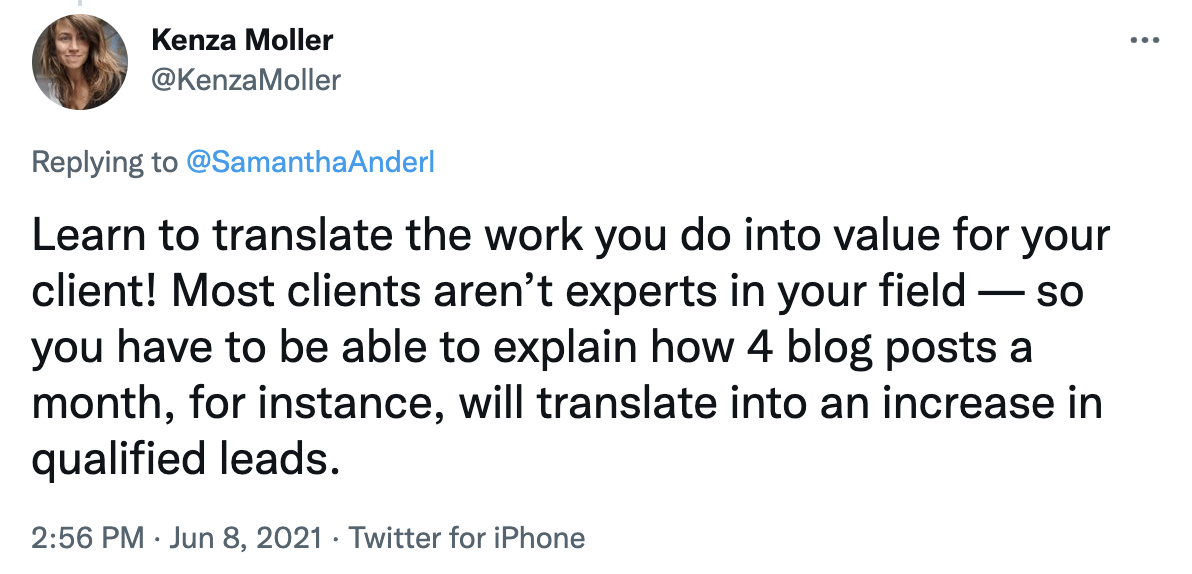




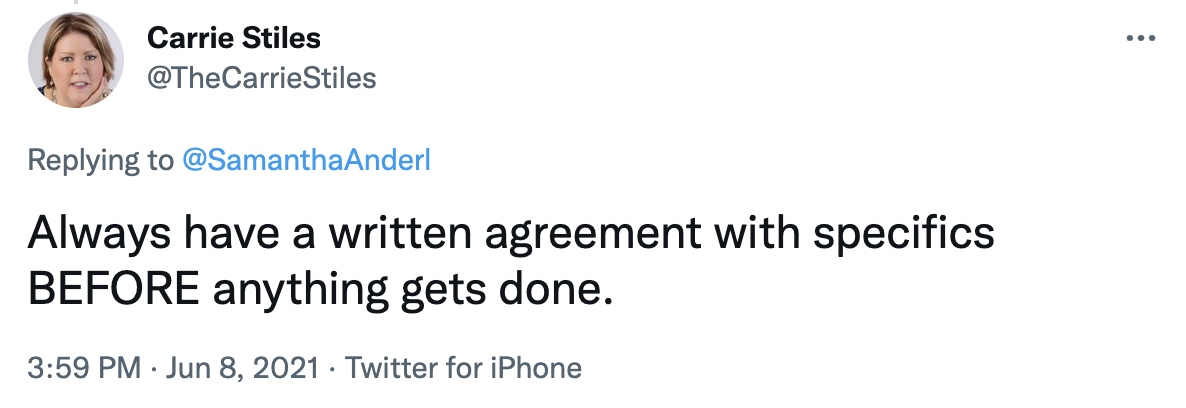
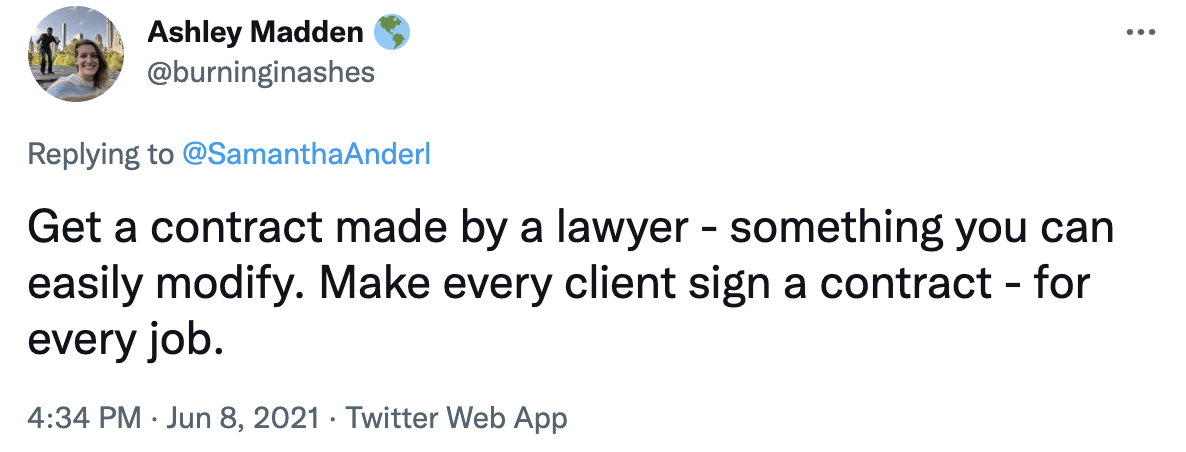
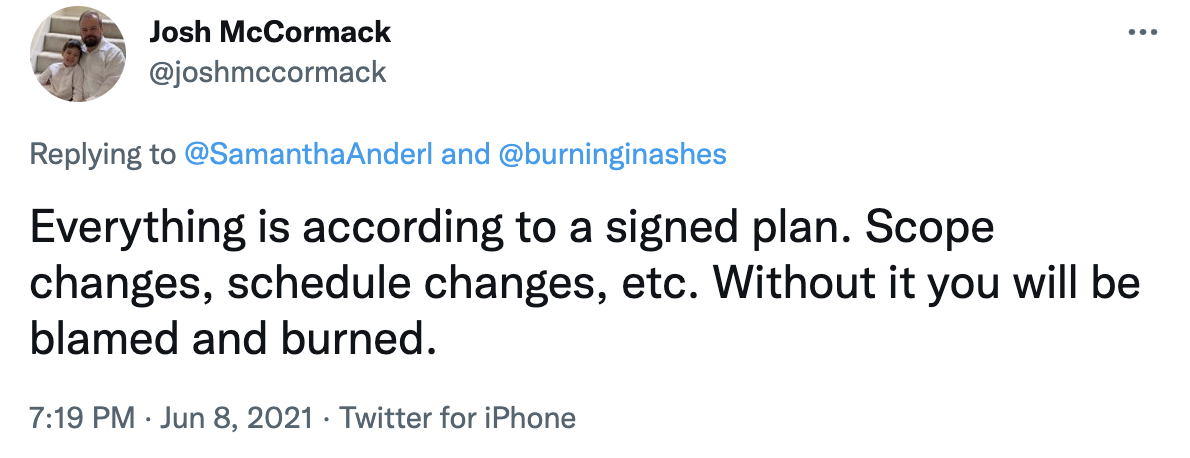

Recent Comments